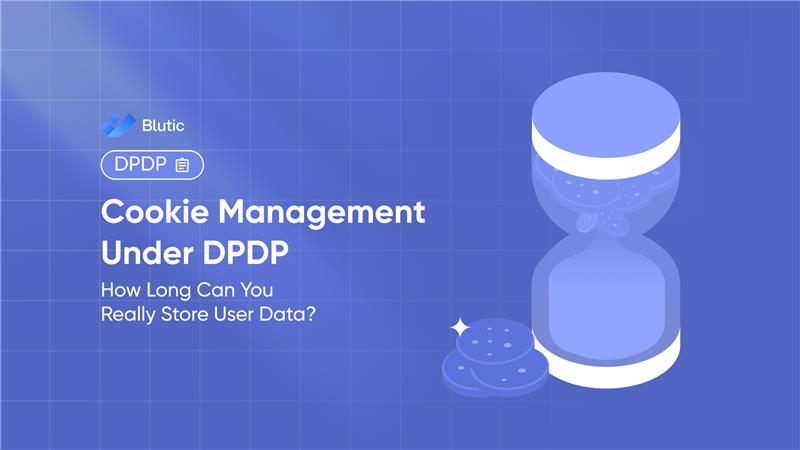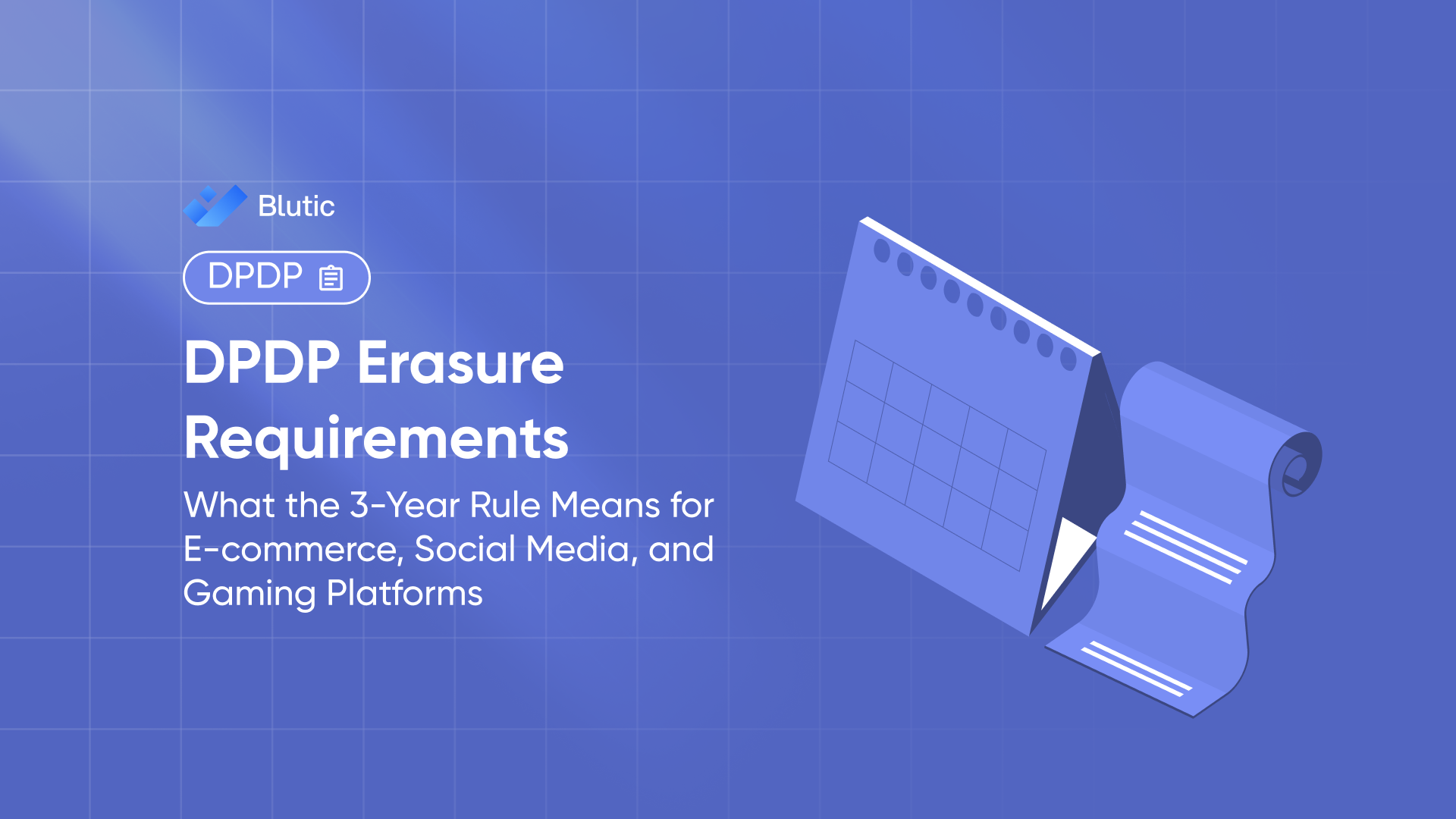Cookie Management Under DPDP: How Long Can You Really Store User Data?

Cookie Management Under DPDP: How Long Can You Really Store User Data?
Introduction
Under the Digital Personal Data Protection Act, 2023 (DPDP Act) and the accompanying Digital Personal Data Protection Rules, 2025, cookie consent and data management practices are undergoing a significant upgrade. One critical area is data retention, how long you can keep user data, tracking logs, cookies, and consent records. Failure to manage this properly can lead to compliance risks, hefty fines, and loss of user trust.
Why Data Retention Matters for Cookies & Consent
Too often, businesses treat cookie data, analytics logs and user profiling as evergreen. But the Rules explicitly require businesses to erase or anonymize personal data once the specified purpose is served and related timelines are up. Retention without purpose is a violation of the law.
What the DPDP Rules Say About Retention & Erasure
According to Rule 8 of the Digital Personal Data Protection Rules, 2025:
- After the specified purpose is no longer served, the data must be erased, unless retention is required by law.
- A Data Fiduciary must notify the Data Principal at least 48 hours before erasure begins.
- Logs and associated traffic data must be retained for a minimum period of one year, unless a law requires otherwise.
- The Rule’s Third Schedule lays out specific retention periods for certain classes of data‑fiduciaries (e‑commerce, gaming, social media): typically three years from last engagement, unless other conditions apply.
How Long Can You Really Store Cookie & Tracking Data?
Here are key benchmarks:
- Consent logs & cookie‑tracking records: Must be kept for at least one year because of Rule 8(1)(f).
- User data for specific purposes: If you collect data for marketing, profiling, analytics etc., you must erase or anonymise the data once the purpose is completed (e.g., after purchase, after campaign end).
- High‑volume platforms (e‑commerce with 2 + crore users, gaming with 50 lakh+ users, social media with 2 crore+ users): Under Third Schedule, retention can be up to three years from last user interaction, unless the data subject requests earlier erasure.
- Data retention for legal compliance: If another law (tax, corporate, financial regulations) mandates data retention, that supersedes shorter periods under DPDP.
What Your Business Must Do Immediately
- Map your tracking and cookie data pipelines identify what data you store, how long you store it, and why.
- Set automated expiry triggers destroy or anonymise data once the purpose has been fulfilled.
- Implement erasure notifications if data is set for erasure, send a 48‑hour notice to the user where required.
- Maintain consent & cookie logs for one year minimum even if the purpose ends sooner.
- Update your cookie management system include categorised cookies, retention labels, logging mechanisms.
- Review vendor contracts and third‑party tools make sure partners align with your retention schedule.
- Communicate clearly in your privacy and cookie notice mention how long you retain cookie/tracking data and under what conditions it is erased.
How Blutic Helps You Manage Cookie Retention & Compliance
Blutic supports Indian businesses in aligning with DPDP‑compliant data retention and cookie management by providing:
- Consent logs and tracking dashboards with timestamped records.
- Automated expiry and erasure settings for user data once purpose is complete.
- Tag‑management integrations (GTM, Shopify, WooCommerce) to block trackers and trigger erasure workflows.
- Multi‑region and multilingual cookie banners that inform users about retention periods.
- Audit ready exports proving you retained data only for the required window and processed it lawfully.
Retention isn’t just about what you keep it’s about what you delete. Under the DPDP Rules, keeping user data indefinitely without purpose is no longer allowed. Your cookie and tracking ecosystem must include an active data‑expiry and erasure strategy. With the right system in place like Blutic you can both stay compliant and build stronger trust with users.
Frequently Asked Questions
More Blogs
Get the indise scoop: the latest tips, tricks, & product updates
%20.png)




